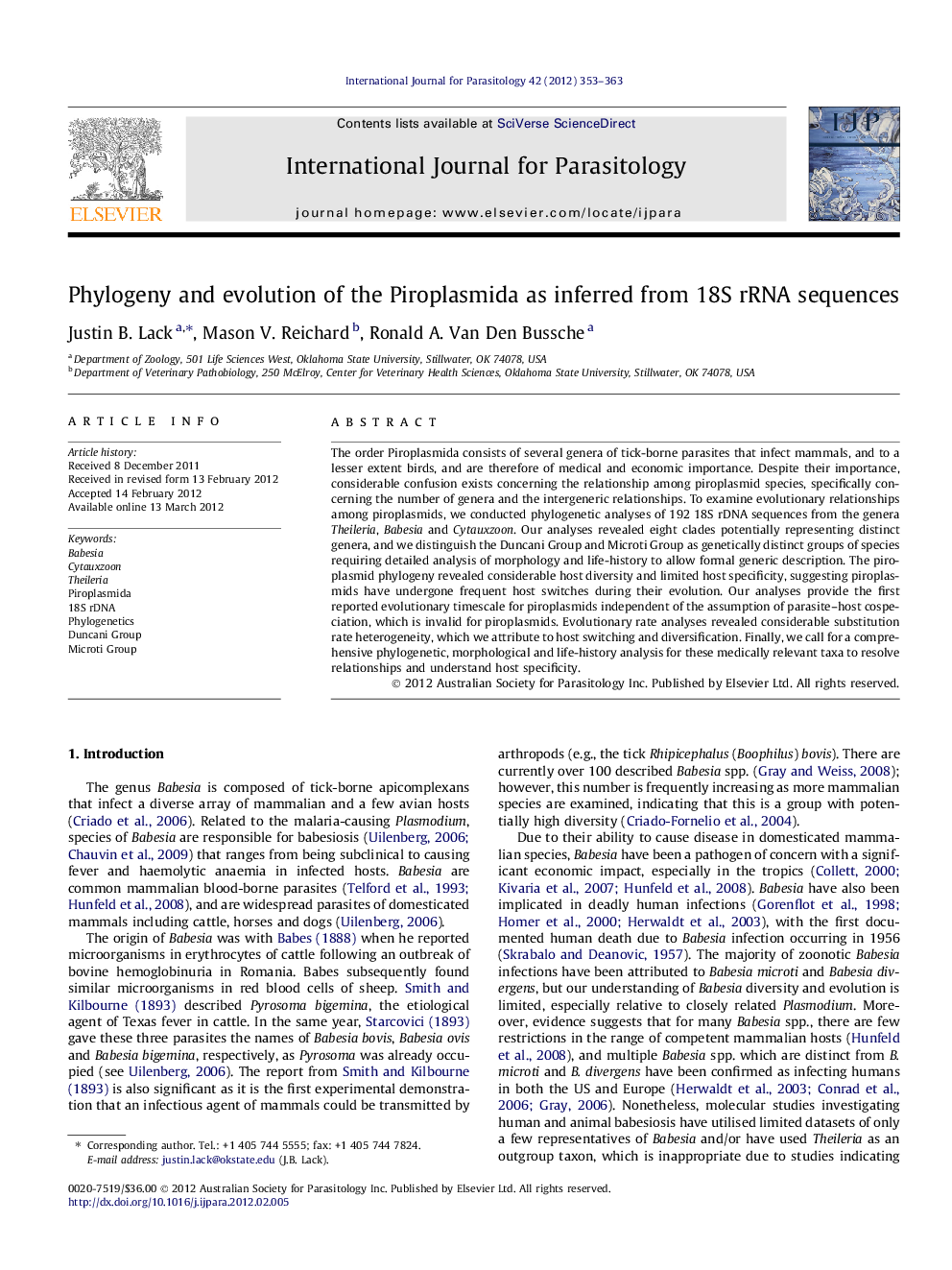| کد مقاله | کد نشریه | سال انتشار | مقاله انگلیسی | نسخه تمام متن |
|---|---|---|---|---|
| 2436251 | 1107295 | 2012 | 11 صفحه PDF | دانلود رایگان |

The order Piroplasmida consists of several genera of tick-borne parasites that infect mammals, and to a lesser extent birds, and are therefore of medical and economic importance. Despite their importance, considerable confusion exists concerning the relationship among piroplasmid species, specifically concerning the number of genera and the intergeneric relationships. To examine evolutionary relationships among piroplasmids, we conducted phylogenetic analyses of 192 18S rDNA sequences from the genera Theileria, Babesia and Cytauxzoon. Our analyses revealed eight clades potentially representing distinct genera, and we distinguish the Duncani Group and Microti Group as genetically distinct groups of species requiring detailed analysis of morphology and life-history to allow formal generic description. The piroplasmid phylogeny revealed considerable host diversity and limited host specificity, suggesting piroplasmids have undergone frequent host switches during their evolution. Our analyses provide the first reported evolutionary timescale for piroplasmids independent of the assumption of parasite–host cospeciation, which is invalid for piroplasmids. Evolutionary rate analyses revealed considerable substitution rate heterogeneity, which we attribute to host switching and diversification. Finally, we call for a comprehensive phylogenetic, morphological and life-history analysis for these medically relevant taxa to resolve relationships and understand host specificity.
Figure optionsDownload high-quality image (84 K)Download as PowerPoint slideHighlights
► Piroplasmids are pathogenic hemoparasites infecting an array of mammalian hosts.
► The evolutionary relationships of piroplasmids were examined using 18s rDNA sequences.
► As many as eight clades potentially corresponding to distinct genera were recovered.
► Two distinct species groups, the Duncani Group and the Microti Group, were distinguished.
► Analyses suggest widespread host switching and evolutionary rate variation.
Journal: International Journal for Parasitology - Volume 42, Issue 4, April 2012, Pages 353–363